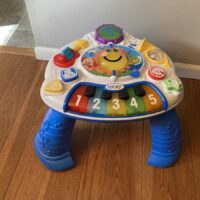It is that time of year again! School bells are ringing, and you may be biting your nails trying to decide what to do with the kiddos this year. Do you take the chance and send back them to school with COVID in full swing again, give distance learning another shot even though it didn’t quite meet your expectations last year, or bite the bit and homeschool them yourself? If you and your child have agreed that homeschooling is the best route for your family, then there is only one direction — forward!
Know Your State’s Laws Concerning Start-Ups
Getting started is really quite simple. Some basics do differ from state to state. Therefore, it’s imperative to know your state’s homeschool laws.
At the bare minimum, you’re going to need to let your county know that you are going to start homeschooling your child, what grade he’s in, and his name and age. You’ll typically need to present a copy of your high school diploma, GED, or college degree to the public school system, though this may vary by state. There may be other pre-school year tasks you must complete as well, depending on your state. Check your state’s laws for these details.
Other laws you may want to consider are:
- Do you need to document the days and time periods your child spends in school?
- Should you be logging the books he reads?
- Do you need to document his field trips?
- Are a specific number of field trips necessary?
- Does your child need specific extra-curricular activities (i.e., foreign language or music for high school credits)?
- Does he need physical education (P.E.) class?
- How much of his curriculum/busy work will you need to save?
- If and how will you be required to evaluate the school year (i.e., testing or having a certified teacher sign off on it)?
You don’t want to be scrambling to do all these things at the end of the school year. It’s best to know if they’re necessary from the beginning.
Decide on a Method of Homeschooling
There are so many methods of homeschooling out there, and everyone has their own opinions as to which is the best. Honestly, no one can tell you which is the best method for you and your child. And the best method for your rambunctious, ADHD son may differ from the best method for your “I LOVE BOOKS!” daughter.
The best method for your child will depend on their learning style, the time you have to devote to teaching them, and both of your patience levels.
Learning Styles
So what do learning styles and teaching methods have in common? EVERYTHING! When your child gets that new toy for Christmas that has those pesky words, “Some Assembly Required” (we all know they’re lying), do you prefer to look at the diagrams and graphs, watch a video on YouTube while you follow along, or hear the directions read to you or read them out loud as you follow them? Your answer dictates your learning style.
Everyone has a specific learning style or a pesky combination with one that’s dominant. When a teacher can learn her student’s learning style and teach specifically the way they learn, in their learning language, so to speak, her students can learn the material more quickly, retain it longer, and reproduce it more readily.
Kinesthetic (Hands-On)
If you said that you prefer to follow a YouTuber, then you’re a Kinesthetic learner. If your child learns by doing, so are they. Teach your kinesthetic learner through hands-on activities and movement. Think “science experiments, nature walks, building, Manipulatives, making the alphabet with their body,” etc.
Visual
Those who prefer to look at the graphs or diagrams, perhaps even ignoring the directions altogether, are visual learners. They learn through sight. If you are homeschooling a child who is a visual learner, give them plenty of diagrams, graphs, pictures, charts, symbols, and the like to illustrate what you’re teaching. Let them draw things that demonstrate what they’re learning – perhaps even in their notebooks. Gasp! Heresy! Yes, parents, these are your doodlers, and this is why. This is how they learn and retain. Let them doodle!
Auditory
Lastly, if you are that parent who actually takes the time to read the directions and painstakingly follows them step by step after reading each one out loud (yes, I’m one of those), you are an auditory learner. If you’re blessed with an auditory learner, let him read his work out loud. Help him create and sing ditties to memorize his facts. An auditory learner will learn best with a curriculum that has Mommy or Daddy (or the online teacher) doing the teaching. They don’t do well with the self-paced curriculum.
Teaching Methods
Now that we’re through the learning styles, let’s discuss the teaching methods. As I said, there are several, but I am only going to discuss four of the most popular.
Traditional Homeschooling
Traditional homeschooling is just that – traditional. It’s a traditional classroom setup with textbooks, a teacher in front of the classroom, desks, and busy work. In every sense of the word, it looks, feels, and tastes like a traditional classroom. Traditional homeschooling works well for visual and auditory learners, but kinesthetic learners find this teaching method challenging.
Classical Homeschooling
Classical homeschooling is worked in a rounded approach with a three-part process of “knowledge,” “reasoning,” and “self-expression” in mind. First, the students learn the facts, and then they learn to think through them. Lastly, they learn to express themselves using those facts.
Not only is this process gone through with the daily material, but this is the process used in the homeschool itself. First, your child will learn the facts in the lower grades. In middle school, he will learn to reason through these facts. Lastly, in high school, he will learn to use these facts in self-expression.
There is no one type of learner that Classical homeschooling is best suited for. This method is great for kinesthetic, visual, and auditory learners alike.
Unschooling
Have you ever heard the expression that if you do what you love, you never work a day in your life? Unschooling is not the absence of school. It’s merely using what a child loves to do to shape their curriculum.
As with the Classical homeschooling method, unschooling caters to every learning type.
Charlotte Mason Homeschooling
The Charlotte Mason method was named for a famous British educator who invested her life in improving education for children in the early 1900s. She believed education needed to be more than bookwork. She believed it needed to include plenty of outdoor exploration, art, music, journaling, reading, and writing as well. Her thought was that all of this was vital to creating a well-rounded student.
Charlotte Mason wasn’t far off course when she developed her approach. If handled correctly, it can very easily cater to each of the three learning styles.
Find a Curriculum for Homeschooling Your Child
There are so many curriculums available to parents within each of these homeschooling methods. The great news is that the homeschool curriculum doesn’t have to break the bank! It comes in as many price points as it does shapes and sizes.
The most commonly used curriculum in a traditional-type homeschool seems to be ABeka. Although it can be pricey, it comes with two options. ABeka can be taught traditionally by you, Mommy or Daddy, or you can choose to purchase the DVDs and allow ABeka’s trained teachers to homeschool your child for you. Regardless of the method, this curriculum has a proven track record.
There are several curriculums available for the Classical approach to homeschooling. Many people like the Memoria Press curriculum. It’s fairly reasonably priced. It has great reviews and is one of the few Classical curriculums that are available in book form.
If you choose to “unschool,” you can choose any sort of anything to homeschool your child. YouTube, National Geographic, Khan Academy, PBS Kids, anything nature, tracking the latest hurricane, documenting the phases of the moon, and so very many learning apps on your iPhone… The list goes on!
If you choose to use a Charlotte Mason homeschooling approach, the Simply Charlotte Mason Curriculum is complete, cheap, simple to use, and has great reviews!
Plan Your Year
After you have your curriculum chosen, it’s time to plan your school year. A plan is essential when you are homeschooling your child!
Create a Calendar
I typically follow the same calendar my school district put out. No, we don’t follow it exactly. We tweak it here and there. That’s the joy of homeschooling! However, this is our starting point; it gives us something to go by without me having to start from ground zero. I like that.
If you don’t like that idea, by all means, find a day on your calendar that looks like a good “First Day of School” and circle it! Put an X through all of the days you don’t want to be in session. Don’t forget to X out the weekends! It wouldn’t hurt to take a peek at the public school calendar to make sure you’re not missing any vacation time.
Schedule in some days for field trips. You don’t have to write about where you’re going yet or what you’re doing. Just mark on there that you’re going somewhere or doing something special. It may even just be a trip to the library for a quick lesson on cataloging. Who knows?
After you mark out all the days you’re taking off school and all the days you’re taking field trips (those days count as school days, so do NOT X those), count up 180 days from day one. Put a big circle around Day 180. That’s the last day of school. Some states, like Tennessee, require at least 180 documented days of school, so make sure you’re counting correctly.
Double-check your calendar. If everything looks right, you’ve got your calendar made up for the year. Now, it’s time to plan out that year.
Set Your Macro-Goals
As with any plan, you must begin by setting your goals. First, you must start with your macro goals. These are the big goals that you have for the year. What do you want to accomplish this year? What big things do you want your child to learn or experience by the end of the school year? Write those things down on a sheet of paper.
Set Your Micro-Goals
Now, break those goals down further into micro-goals. How are you going to get from where you are to the end result (that goal)? Each step that you must take along the way is a micro-goal. Write those steps down.
Create Weekly Goals
Now that you know each step that must be taken to get from point A to point B, you can plot them out as weekly goals. Write them in. Use a pencil so they can be changed… Just in case…
Create SMART Daily Goals
When you know your weekly goals, it will be simple to set your daily goals. Remember, your daily goals should be SMART. They need to be Specific, Measurable, Actionable, Realistic, and Timely. What do I mean by this? Each goal must have specific criteria. You must be able to measure whether it’s being completed or not. You must be able to be taking action on your goal. It must be realistic, and you must set a time limit on that goal.
Create a Daily Routine
From these daily and weekly goals, set yourself a daily routine or schedule. I, personally, don’t believe in using schedules for children. I believe in routines. Schedules are too restrictive.
You may be wondering what the difference is. Schedules require that things be done at a specific time in a specific way for a specific amount of time for a specific purpose. Small children and schedules go together like (well?) chocolate-covered fingers and Daddy’s white Sunday shirt.
Routines, on the other hand, are vital. Routines are merely a certain way and order of doing things. Children thrive on routines.
Your routine will differ depending on your child’s age, however, it should include a few vital things since one task of a routine is to train your child in self-discipline. Every routine should include daily cleanliness (brushing their hair and teeth, washing their face, etc.), making their bed and putting their nightclothes away, and then move into school.
Their school day routine will depend upon the teaching method you choose to use, your child’s age and learning style, and other factors. Once you develop a routine that works for your family, stick to it. Having a routine makes the difference between light and day.
Keep Good Records
Good records are vital for several reasons. One reason for good record-keeping is that several states require parents to submit those records at the end of the school year. Another reason is that many companies have bonuses for students who can present something proving they’re on the A Honor Roll (Family Video gave a free rental to any child on the A Honor Roll one year). A third reason is that your high school student will need these records to graduate. It’s better to keep good records from the start than to scramble at the end of the year to try to come up with them.
Many curriculums have record-keeping books available. However, if yours doesn’t, here is a Cute Teacher Record Book that you might like.
Have Fun When Homeschooling Your Child!
The last thing to remember when you start homeschooling your child is to just have fun! Of all the benefits of homeschooling, the best is that you get to have fun with your child every day! If you can’t think of a way to have fun, I’m sure your child can. Just ask!
FAQs – How to Start Homeschooling Your Child
When Are Parents Allowed to Homeschool?
Parents are allowed to homeschool at any time in America. Although the government provides schools for the purpose of giving parents a convenient means of educating their children, the education of their children is the parents’ responsibility and right. If they choose to use the public schools to fulfill that responsibility, by the way, that is fine too.
Some parents may choose to homeschool for religious reasons and others for educational reasons. Others, yet, may decide to homeschool for health reasons, whether those are due to COVID, illness, the child being bed-bound, or more. Some children merely work better with one-on-one help. Others, yet, may homeschool due to location. There are many reasons parents choose to homeschool.
Which States Allow Homeschooling?
Homeschooling is legal in every state of America. However, it is heavily regulated in some states, such as California. Other states, such as Connecticut, make up for it, having very few rules.
Who Can Help Me Homeschool?
Other Parents?
Unfortunately, other parents cannot homeschool your children. If you choose to homeschool, you, as the parent or legal guardian, must do the homeschooling. In some states, it is legal for the parents and grandparents to share the homeschooling duties.
Homeschool Co-Ops
The only exception to the “No-Parent Rule” is if you choose to be part of a co-op. In this case, various parents take turns teaching different subjects to the groups of students throughout the week. This is not an everyday-all-day thing. This is merely where parents get together at a set time to have specific classes together and support one another.
Homeschool Groups
These are groups of homeschool families who get together for field trips, outings, parties, graduations, or merely to support one another. You may be able to find local Homeschool groups on Facebook.
Homeschool Legal Defense Association
The Homeschool Legal Defense (HSLDA) is there to provide support for every stage of the journey. They advocate for the freedom to homeschool and offer the homeschooling parent the support they need.
Is Homeschooling Better for My Child?
Many homeschooled children outperform their public schooled peers on standardized tests, college entrance exams, and in college.
Can Single Parents Homeschool?
Yes! You might be thinking, “But I work a job! How can I homeschool too?”
Here are some tips to making homeschool happen:
- Don’t try to do everything. I know you think you’re supermom (or dad), but your kiddos can help! Let them sweep the floor, help with the dishes, fold the laundry, or walk the dogs. There are only 24 hours in the day. If you’re doing it all, there won’t be time to homeschool.
- Make more time in the day by being more efficient. Make crockpot meals. Use Walmart’s curbside pick-up service to grab your groceries on your way home from work. Get a coffee pot that’s set on a timer. Purchase an Instapot. I’m sure you can think of other ways to be efficient.
- Don’t try to be traditional. Remember, homeschooling your child is about you and your child! You can create your schedule around YOUR schedule. If you want to do school in the evenings or on the weekends, you can. If you need to do school in three long days instead of five shorter days, that’s possible; some families make that happen. You can adjust your schedule so that you are schooling a few days a week but schooling year-round. There’s no problem with that. It’s YOUR homeschool program!
- Use as much free or cheap curriculum as possible. There are so many free curriculum options out there that you would think these paid curriculums would go out of business. You don’t need to go broke to start homeschooling your child. You can do it for free or close to nothing.
- Remember why you want to homeschool. This goes for all of us. You must remember why you wanted to start homeschooling your child in the first place. In this way, when the going gets tough, you can keep going. Good luck! If you can think of any other tips, list them below!






